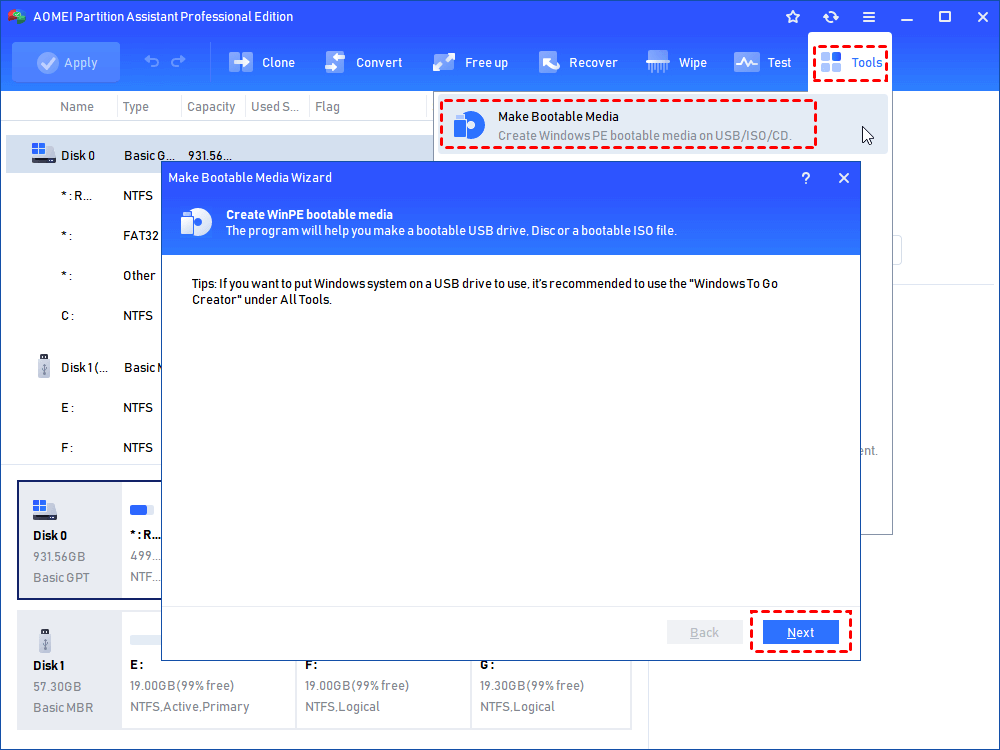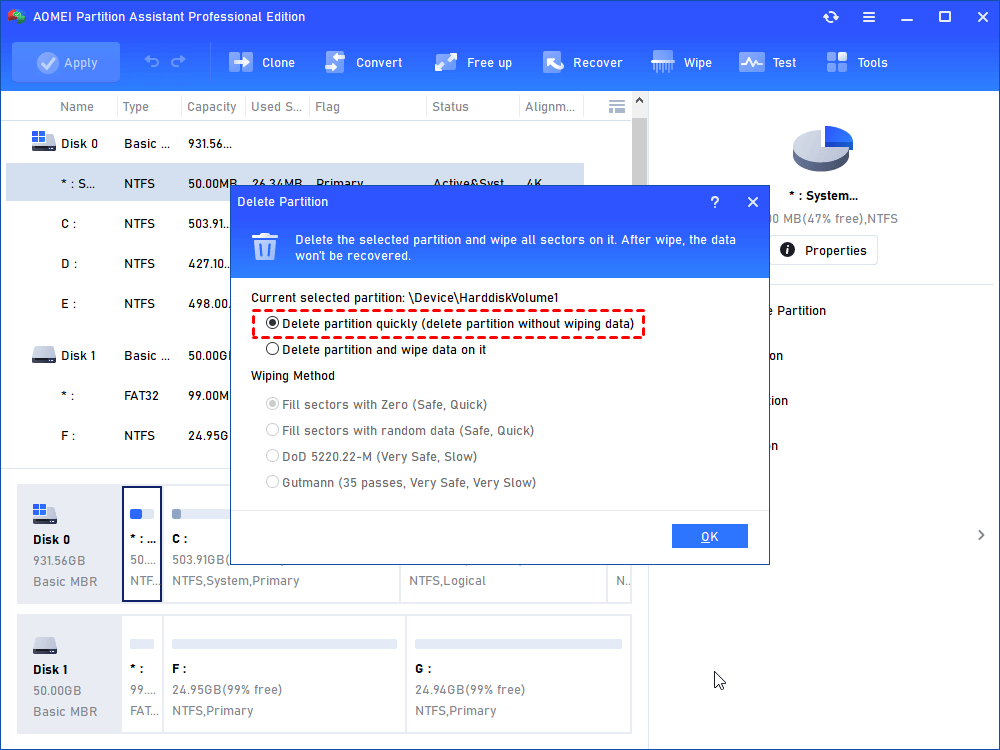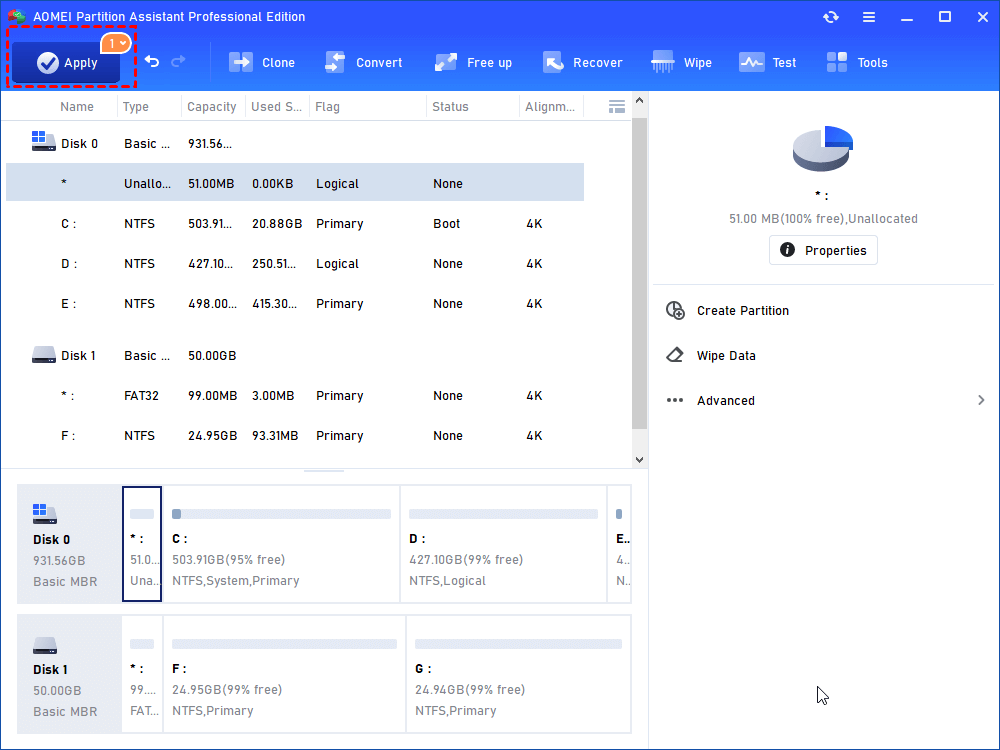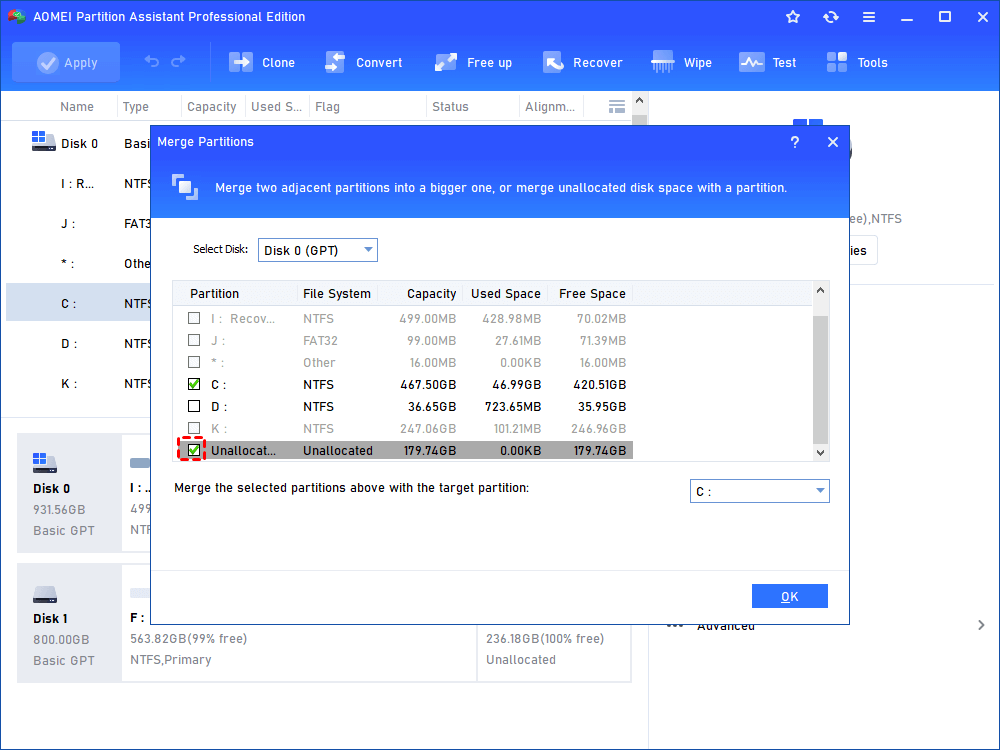- UEFI/GPT-based hard drive partitions
- Partition Requirements
- System partition
- Microsoft reserved partition (MSR)
- Other utility partitions
- To set partitions as utility partitions
- To verify that system and utility partitions exist
- Windows partition
- Recovery tools partition
- Data partitions
- Partition layout
- Sample files: configure drive partitions by using WindowsВ PE and DiskPart scripts
- To partition hard drives and prepare to apply images
- Next steps
- 3 Things You Should Know about EFI System Partition (ESP)
- What is an EFI system partition?
- How to delete the EFI system partition in Windows?
- How to create EFI partition?
- Summary
- How to Create and Delete EFI System Partition in Windows 10/8/7
UEFI/GPT-based hard drive partitions
Create custom partition layouts for your hard disk drives (HDDs), solid-state drives (SSDs), and other drives when deploying Windows to Unified Extensible Firmware Interface (UEFI)–based devices.
If you use a custom partition layout on WindowsВ 10 for desktop editions (Home, Pro, Enterprise, and Education), update the push-button recovery script so the recovery tools can recreate the custom partition layout when needed.
Partition Requirements
When you deploy Windows to a UEFI-based device, you must format the hard drive that includes the Windows partition by using a GUID partition table (GPT) file system. Additional drives may use either the GPT or the master boot record (MBR) file format.
A GPT drive may have up to 128 partitions.
Each partition can have a maximum of 18 exabytes (
18.8 million terabytes) of space.
System partition
The device must contain a system partition. On GPT drives, this is known as the EFI System Partition, or the ESP. This partition is usually stored on the primary hard drive. The device boots to this partition.
The minimum size of this partition is 100 MB, and must be formatted using the FAT32 file format.
This partition is managed by the operating system, and should not contain any other files, including Windows RE tools.
For Advanced Format 4K Native drives (4-KB-per-sector) drives, the minimum size is 260 MB, due to a limitation of the FAT32 file format. The minimum partition size of FAT32 drives is calculated as sector size (4KB) x 65527 = 256 MB.
Advanced Format 512e drives are not affected by this limitation, because their emulated sector size is 512 bytes. 512 bytes x 65527 = 32 MB, which is less than the 100 MB minimum size for this partition.
Microsoft reserved partition (MSR)
In WindowsВ 10, the size of the MSR is 16 MB.
Add an MSR to each GPT drive to help with partition management. The MSR is a reserved partition that does not receive a partition ID. It cannot store user data.
Other utility partitions
Any other utility partitions not managed by Windows must be located before the Windows, data, and recovery image partitions. This allows end users to perform actions such as resizing the Windows partition without affecting system utilities.
Protect end users from accidentally modifying utility partitions by identifying them using a GPT attribute. This prevents these partitions from appearing in File Explorer.
To set partitions as utility partitions
- When you’re deploying Windows by using DiskPart, use the attributes volume set GPT_ATTRIBUTE_PLATFORM_REQUIRED command after you create the partition to identify the partition as a utility partition. For more information, see the MSDN topic: PARTITION_INFORMATION_GPT structure.
To verify that system and utility partitions exist
- Click Start, right-click This PC, and then click Manage. The Computer Management window opens.
- Click Disk Management. The list of available drives and partitions appears.
- In the list of drives and partitions, confirm that the system and utility partitions are present and are not assigned a drive letter.
Windows partition
- The partition must have at least 20 gigabytes (GB) of drive space for 64-bit versions, or 16 GB for 32-bit versions.
- The Windows partition must be formatted using the NTFS file format.
- The Windows partition must have 16 GB of free space after the user has completed the Out Of Box Experience (OOBE) and Automatic Maintenance has completed.
Recovery tools partition
This partition must be at least 300 MB.
The Windows Recovery Environment (Windows RE) tools require additional free space:
- A minimum of 52 MB is required but 250 MB is recommended, to accomodate future updates, especially with custom partition layouts.
When calculating free space, note:
- The recovery image, winre.wim, is typically between 250-300MB, depending on what drivers, languages, and customizations you add.
- The file system itself can take up additional space. For example, NTFS may reserve 5-15MB or more on a 750MB partition.
This partition must use the Type ID: DE94BBA4-06D1-4D40-A16A-BFD50179D6AC.
The recovery tools should be in a separate partition than the Windows partition to support automatic failover and to support booting partitions encrypted with WindowsВ BitLocker Drive Encryption.
We recommend that you place this partition immediately after the Windows partition. This allows Windows to modify and recreate the partition later if future updates require a larger recovery image.
Data partitions
The recommended partition layout for WindowsВ 10 does not include data partitions. However, if data partitions are required, they should be placed after the Windows RE partition. This allows future updates to Windows RE to grow the Windows RE partition by shrinking the Windows partition.
This layout makes it more difficult for end users to remove the data partition and merge the space with the Windows partition. To do so, the Windows RE partition must be moved to the end of the unused space reclaimed from the data partition, so that the Windows partition can be extended.
WindowsВ 10 does not include functionality or utility to facilitate this process. However, manufacturers can develop and provide such a utility if PCs are shipped with data partitions.
Partition layout
The default partition layout for UEFI-based PCs is: a system partition, an MSR, a Windows partition, and a recovery tools partition.
This layout lets you use WindowsВ BitLocker Drive Encryption through both Windows and through the Windows Recovery Environment.
Sample files: configure drive partitions by using WindowsВ PE and DiskPart scripts
For image-based deployment, boot the PC to Windows PE, and then use the DiskPart tool to create the partition structures on your destination PCs.
In these DiskPart examples, the partitions are assigned the letters: System=S, Windows=W, and Recovery=R. The MSR partition does not receive a drive letter.
Change the Windows drive letter to a letter that’s near the end of the alphabet, such as W, to avoid drive letter conflicts. Do not use X, because this drive letter is reserved for Windows PE. After the device reboots, the Windows partition is assigned the letter C, and the other partitions don’t receive drive letters.
If you reboot, WindowsВ PE reassigns disk letters alphabetically, starting with the letter C, without regard to the configuration in Windows Setup. This configuration can change based on the presence of different drives, such as USB flash drives.
The following steps describe how to partition your hard drives and prepare to apply images. You can use the code in the sections that follow to complete these steps.
To partition hard drives and prepare to apply images
Copy and save the CreatePartitions-UEFI.txt file to a USB flash drive.
Use WindowsВ PE to boot the destination PC.
Clean and partition the drive. In this example, F is the letter of the USB flash drive.
- If you use a custom partition layout on WindowsВ 10 for desktop editions, update the push-button recovery script so the recovery tools can recreate the custom partition layout when needed.
To avoid bare metal recovery boot issues due to partition size, manufacturers should allow the bare metal recovery feature’s auto generation script to create the partition used for the recovery WIM. If manufacturer’s want to use a custom DISKPART script to create partitions, the recommended minimum partition size is 990MB with a minimum of 250MB of free space.
Next steps
Use a deployment script to apply the Windows images on the newly created partitions. For more information, see Capture and Apply Windows, System, and Recovery Partitions.
3 Things You Should Know about EFI System Partition (ESP)
An EFI system partition is typically created during the OS installation. So, what is it used for and is it possible to delete the ESP when you no longer need it? Here comes the detailed explanation.
By AOMEI 
What is an EFI system partition?
The EFI system partition (ESP), a small partition formatted with FAT32, is usually around 100MB, this is where the EFI boot loaders and applications used by the firmware at system during start-up are stored. If your hard drive is in the GUID Partition table (GPT) partition style, it will automatically generate an EFI system partition after you have installed your operating systems. Both Windows and Mac operating systems are supported.
You normally can’t view the EFI partition through File Explorer (or Finder for Mac OSX) as it doesn’t have a drive letter assigned to it and if you accidentally manage to find and delete the partition, then your system will be unbootable. In order to protect the EFI partition, Windows will attempt to prevent you from deleting it. So, in the circumstances where you still wish to delete the EFI partition, what can you do?
How to delete the EFI system partition in Windows?
As we mentioned above, the EFI partition is essential if you want to be able to boot up your operating system that you have installed on your internal hard drive. However, if you have an external hard drive rather than internal one, you do not require an EFI partition to boot from the drive.
Besides, if you have created an EFI partition on a Mac and now want to install Windows operating system, you might need to delete the original EFI partition and generate a new one. To delete the original EFI partition, you have to turn to a third-party partition manager since the Windows native tools don’t allow you to remove the ESP. Here we highly recommend AOMEI Partition Assistant Pro, which enables you to delete any partition without losing data on others.
To delete the EFI partition using AOMEI Partition Assistant follow the below steps:
1. Install and run AOMEI Partition Assistant Pro.
2. Connect either a USB drive or CD to your computer and click Make Bootable Media. Follow the wizard to create a bootable disk. Then boot computer from the bootable device.
3. In the main window, right click on the EFI partition that needs to get rid of and select Delete Partition.
4. In the pop out window, click “OK” to confirm.
5. The program has not yet made any permanent changes to your hard drive, if you’re happy to proceed you need to click Apply to save the changes.
After that, the EFI partition has now become unallocated space, and you can add this unallocated space to any of the existing partitions by using the Merge Partitions function.
Apart from deleting the EFI partition, AOMEI Partition Assistant has many useful features that the in-built Windows Disk Management doesn’t. AOMEI Partition Assistant has the ability to convert disks between GPT and MBR without losing any of your data, clone partition, move partitions, migrate operating systems, recover deleted partitions, and more!
How to create EFI partition?
In order to boot Windows on a GPT disk, we know that the drive must contain an EFI system partition and a Microsoft Reserved Partition (MSR). If you delete the EFI partition on the system disk by mistake, then Windows will fail to boot. On occasion, when you migrate your OS or install it on a hard drive, it may fail to generate an EFI partition and cause Windows boot issues. In this case, you can create a new EFI partition and then install an EFI boot loader in order to make the hard drive bootable. Here is the tutorial:
1. Boot your computer from a Windows installation disc or recovery disk. Press Shift+F10 during the setup to enter the command prompt.
2. Run the commands below to shrink the partition to free up some unallocated space.
diskpart
list disk
select disk X (X represents the disk number of the disk that requires an EFI partition)
list partition
select partition N (N represents the partition number of the partition that needs shrinking)
shrink desired=500 (shrink the partition by 500MB)
3. Then you can create EFI partition out of the 500MB unallocated space using the command below:
create partition EFI size=200
format quick fs=fat32 label=»System»
create partition msr size = 128
4. After those two partition have been successfully created, use the commands below to install boot loader and other applications needed.
bootrec /fixboot
bcdboot c:\Windows /s b: /f ALL
On an EFI-only system, the last two options don’t need to be included, and the command should read «bcdboot C:\Windows».
6. Reboot your computer to see if it is now bootable.
Summary
Now, you should have a thorough understanding of what is EFI system partition, what it is used for, how to delete or recreate an ESP. If your computer fails to boot because of a missing EFI system partition, you can use the above method to recreate it or use AOMEI Partition Assistant to recover missing EFI system partition, and then your Windows system should boot as normal. Even though this will not cause data loss, it is also recommended to create a disk backup before you make any changes.
How to Create and Delete EFI System Partition in Windows 10/8/7

In this post, you’ll learn «what is EFI system partition». And we’re going to talk about how to delete and create EFI system partition on Windows 10, and will present you the solution to recover lost data from EFI system partition.
What is EFI System Partition?
The EFI System Partition (ESP) is a type of partition on a Windows computer that creates several regions on the PC’s hard disk so that information stored on the different partitions can be managed separately by the Windows operating system.
Windows computer uses it because they contain the following four main components:
The EFI is most used by systems that adhere to the Unified Extensive Firmware Interface (UEFI). The UEFI firmware works during the process of booting a computer to load files stored on the ESP in order to start installed operating system and system utilities.
It’s the function of the boot loaders to ensure that all the necessary files and utilities have been booted before the completion of the booting sequence. The ESP ensures that all errors encountered during system booting phase are resolved. It does this by working with the boot loader to offer users good experiences during system startup.










